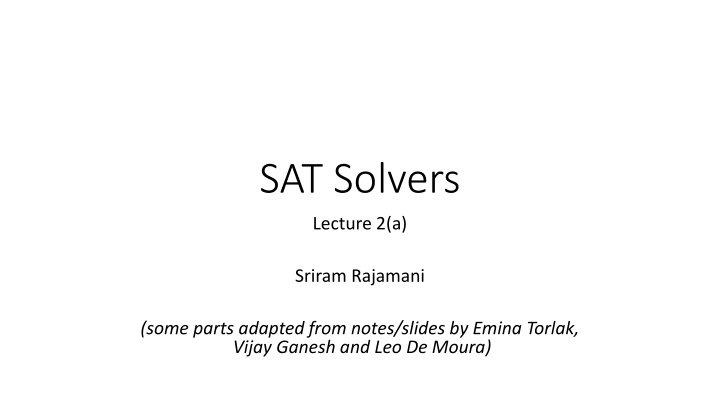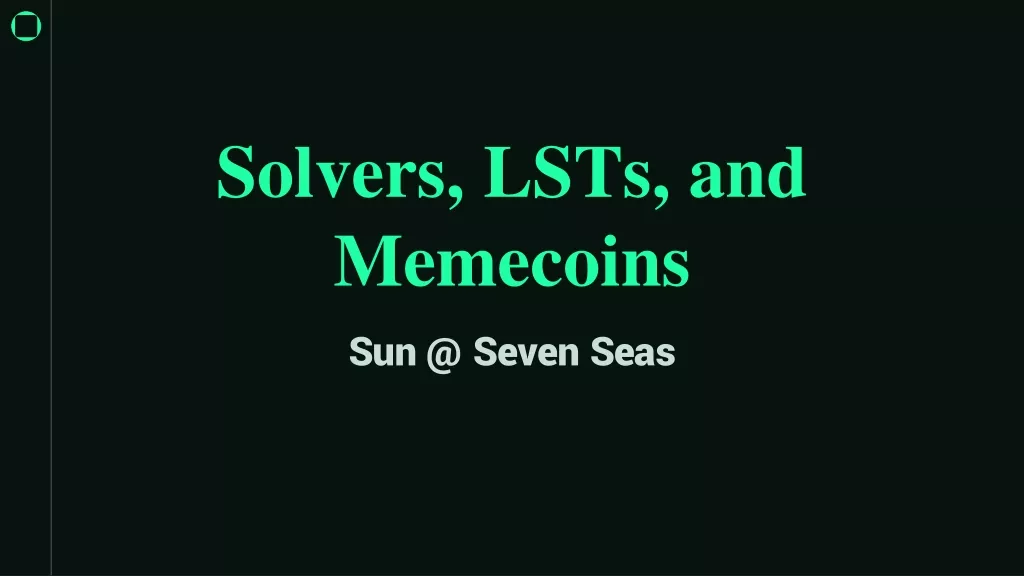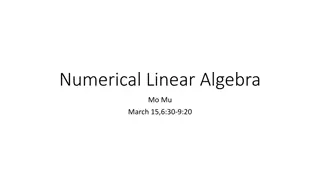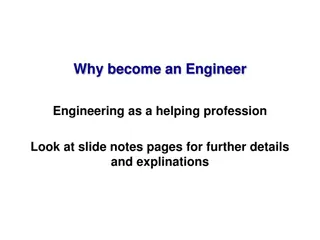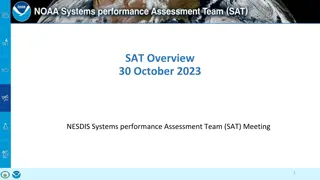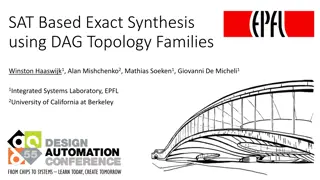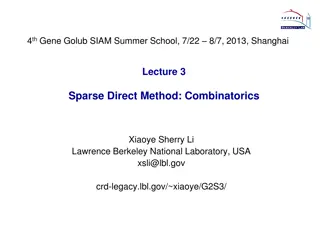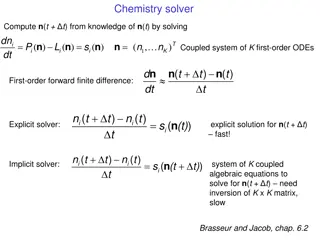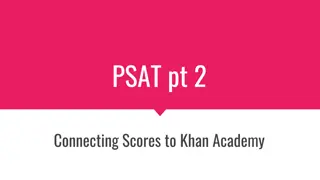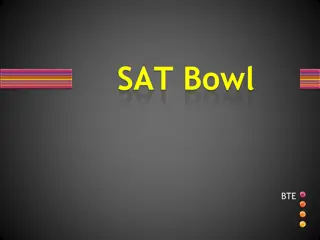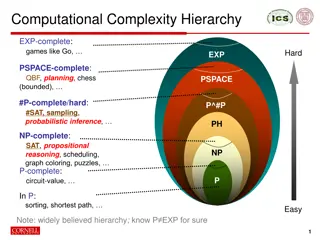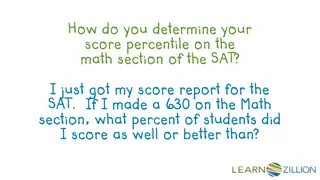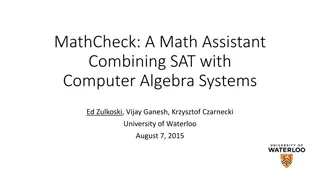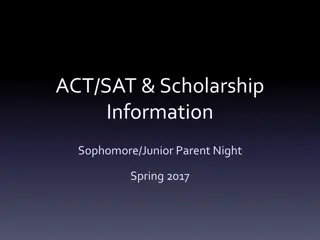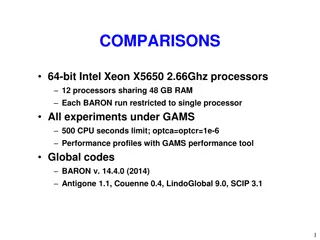SAT Solvers
Repair by connective tissue occurs in response to severe tissue injuries affecting nondividing cells. This process involves the replacement of nonregenerated cells with connective tissue, granulation tissue formation, scar formation, and remodeling. The microscopic appearance of granulation tissue is characterized by fibroblast proliferation and angiogenesis. Angiogenesis plays a critical role in healing at injury sites. This sequential process of repair by connective tissue deposition involves the formation of new blood vessels, fibroblast migration and proliferation, extracellular matrix deposition, and tissue remodeling.
Download Presentation

Please find below an Image/Link to download the presentation.
The content on the website is provided AS IS for your information and personal use only. It may not be sold, licensed, or shared on other websites without obtaining consent from the author.If you encounter any issues during the download, it is possible that the publisher has removed the file from their server.
You are allowed to download the files provided on this website for personal or commercial use, subject to the condition that they are used lawfully. All files are the property of their respective owners.
The content on the website is provided AS IS for your information and personal use only. It may not be sold, licensed, or shared on other websites without obtaining consent from the author.
E N D
Presentation Transcript
SAT Solvers Lecture 2(a) Sriram Rajamani (some parts adapted from notes/slides by Emina Torlak, Vijay Ganesh and Leo De Moura)
SAT solvers SAT: Given a Boolean formula ?(?1,?2, .??) over variables ?1,?2, .??, does there exist an assignment of 0/1 values of variables that leads to the formula evaluating to 1? The satisfying assignment is called a model for the formula ?. The formula represents the set of all satisfying models.
Practical progress in SAT solving With attribution to Vijay Ganesh
SAT solver Take 1 This is a simple algorithm, but does not work well in practice Number of splitting decisions needed tends to be exponential on the number of variables Modern SAT solvers do much better by using a few simple additional ideas
Modern SAT solvers First convert a formula to CNF (Conjunctive Normal Form) Use variant of DPLL (Davis Putnam Logeman Loveland procedure, from 1962, with a few new insights)
Syntax of SAT formulas ? = ? =? | ~? ? =? | ? | ? ? | ? ? | ? ? | ? ? ?
CNF: Conjunctive Normal Form ? = ? =? | ~? ? =? | ? | ? ? | ? ? | ? ? | ? ? ? ? = ? =? | ~? ? =? | ? ? ? =? | ? ? ?
?= ? =? | ~? ? =? | ? | ? ? | ? ? | ? ? | ? ? ? Converting formulas to NNF Step 0: Remove implications and double implications ?1 ?2 = ?1 ?2 ?1 ?2 = ?1 ?2 ?2 ?1 Step 1: Push negations inside using De Morgan s laws ?1 ?2 = ?1 ?2 ?1 ?2 = ?1 ?2 ? ~? ? = ? =? | ~? ? = ? = = ? ~? ? ? | ? ?
NNF to CNF ? = ? =? | ~? ? = ? ? ? | ? ? Main issue: How to deal with disjunction of conjuncts, such as: ?1 ?2 ?? (?1 ?2 ??) ? = ? =? | ~? ? =? | ? ? ? =? | ? ? ?
NNF to CNF ? = ? =? | ~? ? = ? ? ? | ? ? Na ve translation explodes! ?1 ?2 ?? (?1 ?2 ??) = ?1 ?1 ?1 ?2 ?1 ?3 ?1 ?? ?2 ?1 ?2 ?2 ?2 ?3 ?2 ?? ?? ?1 ?? ?2 ?? ?3 ?? ?? ? = ? =? | ~? ? =? | ? ? ? =? | ? ? ?
NNF to CNF ? = ? =? | ~? ? = ? ? ? | ? ? Idea: Use extra variables to denote each disjunct ?1 ?2 ?? (?1 ?2 ??) ?1 ?2 (?1 ?2) ~?1 ?1 ~?2 ?2 = ? = ? =? | ~? ? =? | ? ? ? =? | ? ? ?
NNF to CNF Notes: 1. The resultant formula is equisatisfiable to the original formula Idea: Use extra variables to denote each disjunct ?1 ?2 ?? (?1 ?2 ??) 2. The translation is linear ?1 ?2 ?? (?1 ?2 ??) 3. Equisatisfiability is weaker than equivalence (but suffices to check satisfiability) = 4. This idea is due to Tseitin (and called Tseitin s transformation)
NNF to CNF ? = ? =? | ~? ? = ? ? ? | ? ? Idea: Use extra variables to denote each disjunct ?1 ?2 ?? (?1 ?2 ??) ?1 ?2 ?? (?1 ?2 ??) = ? = ? =? | ~? ? =? | ? ? ? =? | ? ? ?
Special case of resolution: unit resolution or BCP (binary constraint propagation)
Two inference rules: BCP and PLP BCP = Binary Constraint Propagation PLP = Pure Literal Propagation 1. If a literal occurs only positively set it to true 2. If a literal occurs only negatively set if to false
Davis Putnam Logeman Loveland (DPLL) with PLP
